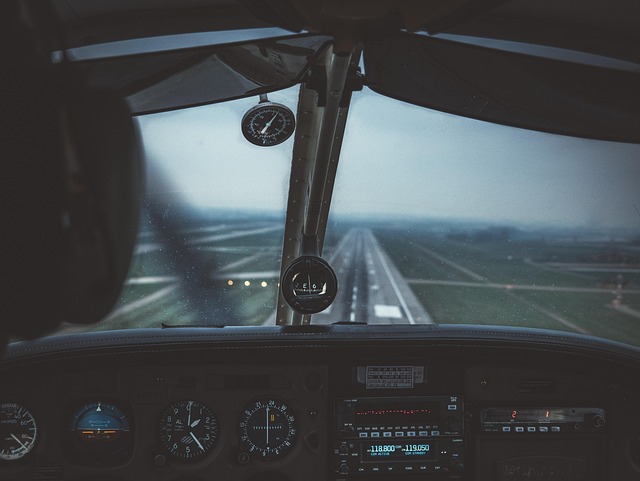Pilot Training for Retirees: Unlock New Horizons and Discover the Benefits of Becoming a Pilot
Pilot training for retirees offers a unique opportunity to explore new horizons and gain valuable skills. Learn how retirees can benefit from becoming a pilot, including the flexibility it provides and the exciting possibilities that await. Discover how to get started today.

The Benefits of Pilot Training for Retirees
Pilot training offers numerous advantages specifically suited to retirees. The cognitive engagement required during flight training—including spatial awareness, multitasking, and problem-solving—provides excellent mental exercise that helps maintain brain health. Studies suggest that learning complex skills in later years contributes significantly to cognitive maintenance. Additionally, earning a pilot’s license opens up travel possibilities that most people never experience. The sense of accomplishment that comes with mastering aviation skills often translates to increased confidence in other areas of life. Many retirees also report expanded social circles through flying clubs, hangar gatherings, and aviation communities that share their passion.
What to Know Before Starting Pilot Training
Before embarking on your pilot training journey, understanding the requirements is essential. The FAA mandates a minimum of 40 hours of flight time for a Private Pilot License, though most students require 60-70 hours to develop proficiency. Additionally, you’ll need to obtain a medical certificate—with different classes available depending on your flying goals. While there’s no upper age limit for pilot training, a basic medical assessment ensures you can safely operate an aircraft. The training process typically involves ground school (covering regulations, navigation, weather theory, and aircraft systems) alongside practical flight instruction. Prospective pilots should realistically assess their available time commitment, as consistent practice produces the best results.
The Joys of Flying for Retirees
Many retiree pilots describe their time in the air as uniquely freeing and perspective-changing. Flying offers breathtaking views and experiences inaccessible to most people—from soaring over landscapes at sunset to navigating through clouds and witnessing weather patterns from above. The sense of freedom and control experienced while piloting an aircraft often becomes addictive in the best way. Retirees frequently mention how flying connects them with younger generations, as aviation enthusiasts span all age groups. This activity also provides purpose and structure, with many pilots planning regular flights to new destinations, participating in fly-ins, or volunteering for organizations like Angel Flight that provide humanitarian air transportation.
How Pilot Training Fits into a Retiree’s Lifestyle
Flight training can be tailored to accommodate the retiree lifestyle. Unlike working professionals who must squeeze lessons into busy schedules, retirees often have flexibility for mid-week training when flight schools are less crowded and instructors more available. Many flight schools offer part-time programs that allow students to progress at their preferred pace. For those concerned about physical demands, modern aircraft feature ergonomic designs that minimize physical strain. Additionally, flying can complement retirement travel plans, whether through recreational day trips to nearby airports, visiting family in other states, or exploring destinations previously considered too remote.
Types of Pilot Licenses and Training Programs
Different pilot licenses accommodate various flying goals and commitment levels. The Sport Pilot License requires fewer hours (20 minimum) and a driver’s license instead of an FAA medical certificate, though it limits aircraft types and flying conditions. The Private Pilot License offers more flexibility but requires more training. For those interested in a gradual approach, discovery flights provide an introductory experience before committing to full training. Simulator-based programs can supplement actual flight hours, often reducing overall training costs while providing practice in various scenarios and conditions.
Pilot Training Programs and Associated Costs
When considering flight training, understanding the various programs and their associated costs helps with planning this significant investment. Training expenses vary based on location, aircraft type, and individual progress rate.
| Program Type | Provider Examples | Estimated Cost Range |
|---|---|---|
| Private Pilot License | ATP Flight School | $12,000 - $15,000 |
| Sport Pilot License | Midwest Sport Pilot Academy | $5,000 - $8,000 |
| Instrument Rating (add-on) | FlightSafety International | $8,000 - $12,000 |
| Discovery Flight Package | Cessna Pilot Centers | $150 - $500 |
| Accelerated Training Program | American Flyers | $10,000 - $20,000 |
Prices, rates, or cost estimates mentioned in this article are based on the latest available information but may change over time. Independent research is advised before making financial decisions.
Embracing the Aviation Community
One unexpected benefit of pursuing pilot training in retirement is joining the welcoming aviation community. Airports often serve as social hubs where pilots gather to share experiences, advice, and camaraderie. Many retiree pilots find mentorship opportunities—both receiving guidance from experienced aviators and eventually mentoring newer pilots. Flying clubs offer shared aircraft ownership options that reduce costs while fostering community connections. Aviation events like fly-ins, airshows, and pancake breakfasts at local airports provide regular social engagements centered around a shared passion. This community aspect often becomes as valuable as the flying itself, creating a sense of belonging and purpose that enriches retirement years.
Pilot training for retirees represents more than just learning a new skill—it’s an opportunity to challenge yourself, engage with a vibrant community, and experience the world from a new perspective. With flexible training options and the time to enjoy the journey, retirement provides an ideal backdrop for pursuing this rewarding aviation adventure.




